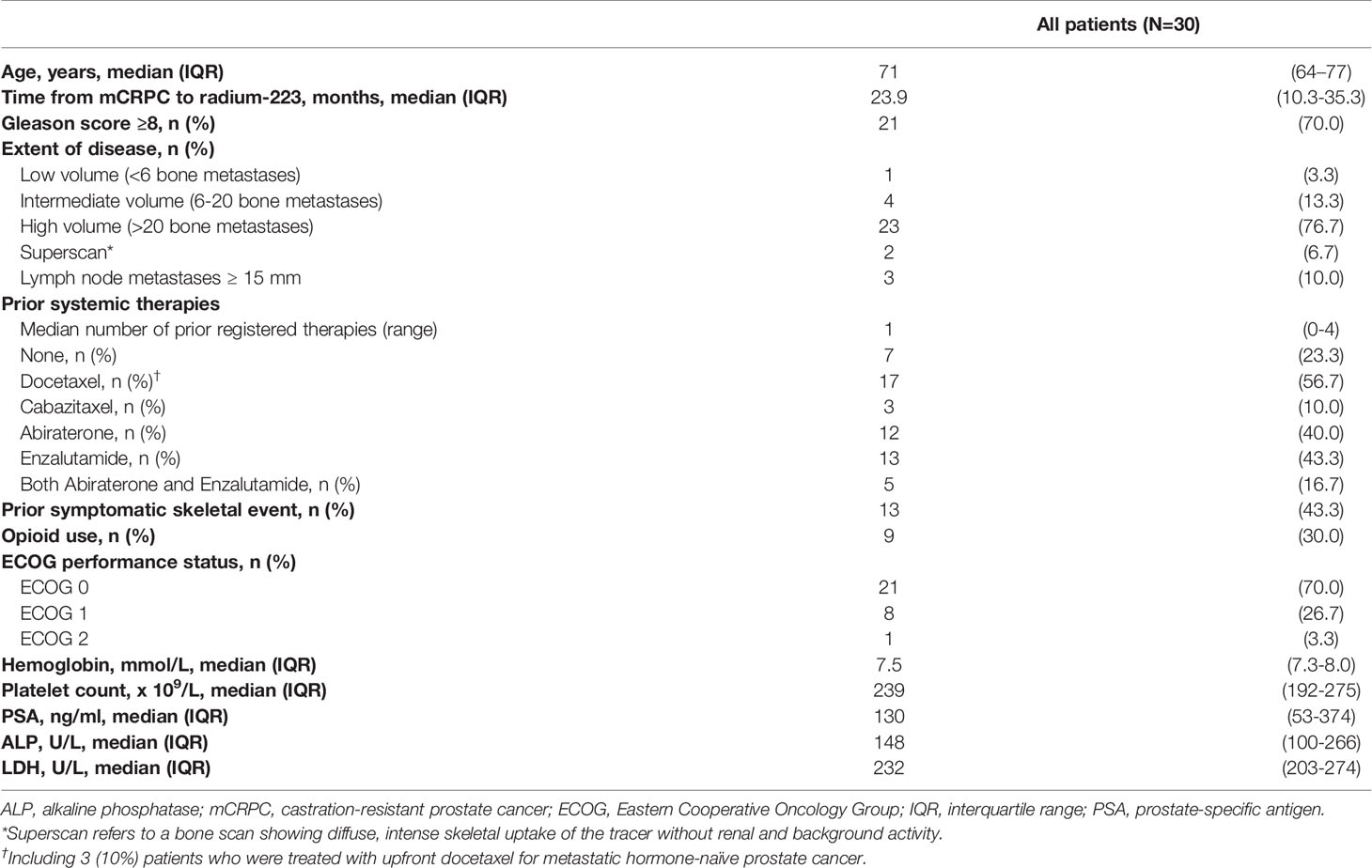
This retrospective cohort study used data from an electronic health record (EHR)-derived database. The present real-world study was conducted to help identify patients with mCRPC in whom radium-223 may offer the most benefit, by assessing the characteristics of patients who survived ≥2 versus <2 years after the start of radium-223 therapy.

Ĭhoosing the appropriate patient and treatment sequence is important to optimize the survival benefit from radium-223. Radium-223 may also be used before chemotherapy: in a subgroup analysis of participants enrolled in ALSYMPCA who had not previously received chemotherapy, treatment with radium-223 prolonged median overall survival (OS) by 4.6 months compared with placebo (16.1 vs 11.5 months, respectively, HR 0.69, 95% CI: 0.52–0.92 p = 0.01). In clinical practice, radium-223 is used in various lines of therapy, either as monotherapy or in combination with other agents, and is frequently administered following or layered onto sequential novel hormone agents.

Novel hormone agents were not available outside clinical trials during ALSYMPCA, but are widely available now, and chemotherapy is typically delayed to later lines.
#Radium injections for prostate cancer trial#
Since the pivotal phase 3 trial of the alpha emitter radium-223 (ALSYMPCA ), the mCRPC treatment landscape has evolved. Patients who survived ≥2 years after the start of radium-223 were younger and had better ECOG PS, lower disease burden, and less use of prior chemotherapy than those who survived <2 years. In this study of men with mCRPC treated in real-world clinical practice, median OS was consistent with that seen in the phase 3 ALSYMPCA trial. For patients with survival ≥2 years versus <2 years, median age was 71 versus 75 years, 4% versus 14% had ECOG PS 2–4, 4% versus 10% had visceral metastases, 38% versus 44% had prior SSEs, and 16% versus 32% had prior chemotherapy. Patient characteristics were compared between those who survived ≥2 years versus 75 years, Eastern Cooperative Oncology Group performance status (ECOG PS) 2–4, visceral metastases, prior symptomatic skeletal events (SSEs), and prior chemotherapy were independently prognostic of reduced OS.

Median overall survival (OS) and prostate-specific antigen (PSA) response (≥50% reduction) from start of radium-223 treatment were the primary and secondary endpoints, respectively. This retrospective study of electronic health records in the US Flatiron database (NCT04516161) included patients with mCRPC treated with radium-223 between January 2013 and June 2019. The real-world EPIX study was conducted to gather information about the characteristics of patients with metastatic castration-resistant prostate cancer (mCRPC) who survived ≥2 years after treatment with the alpha-emitter radium-223.


 0 kommentar(er)
0 kommentar(er)
